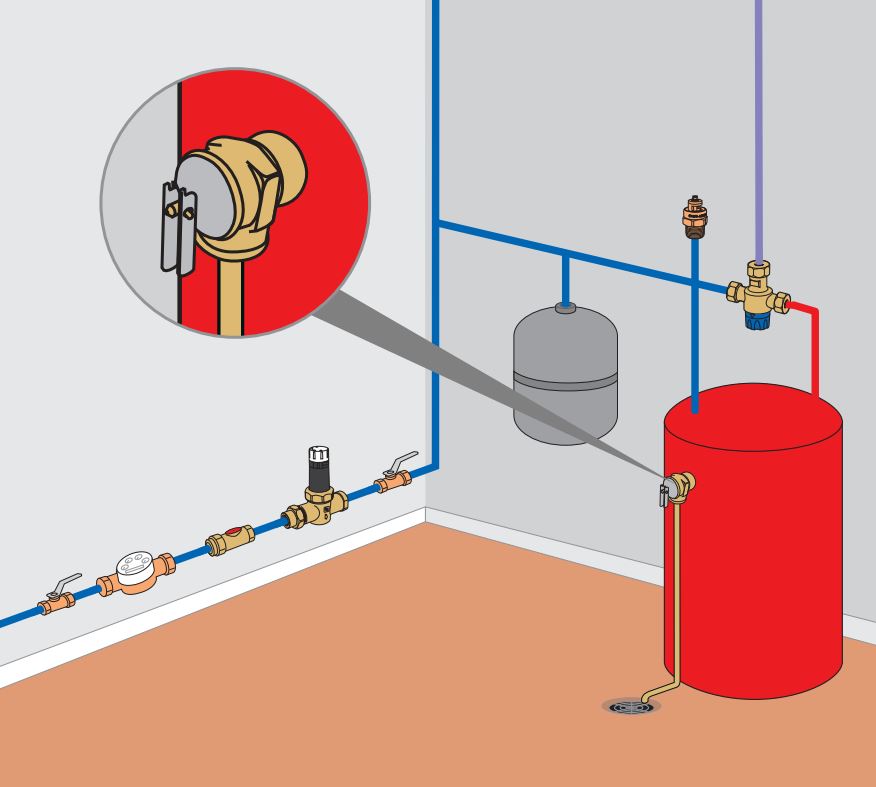Why does my t&p valve leak

Although the leaking of your T&P valve may seem like a nuisance at times, it may be only doing its job! But you need to know exactly what is the real reason behind those leaks. Other it could cause huge damages!
Why Does My T&P Valve Leak?
Although the leaking of your T&P valve may seem like a nuisance at times, it may be only doing its job! A T&P valve which is also called as temperature and pressure relief valve is designed to protect the water heater from building up excessive pressure to ensure the safety of those potentially in harm's way. The T&P valve is a critical safety device required by plumbing standards on all tank-type water heaters to prevent dangerous explosions.
A T&P relief valve for water heaters or hot water storage tanks is an emergency safety device. When properly installed, the valve allows water to discharge when conditions arise that require such an action. These conditions can be either excessive pressure or dangerously high temperature, or both.
In the event of excessive pressure, the T&P valve will open to relieve the pressure by discharging an amount of water to waste. In doing so the pressure of the water in the tank is reduced. In the event of excessive temperature, the T&P valve will open and discharge an amount of water. In doing so cold water enters the tank to replace the discharged hot water, thus bringing the overall temperature of the tank back down to a safe level. Building codes require the discharge pipe from a T&P valve to terminate safely, typically 6-24 inches above the floor or to an approved drain.
Key Reasons for a T&P Valve to Leak
There are a few different reasons why your t&p valve is leaking.
- High pressure or heat building up withing the water heater tank –if it is regular, needs to rectify the issue that cause to heat and pressure building up
- Failed expansion tank or there is no expansion tank at all - needs to inspect you have one and if you don’t have one get professional help
- Faulty or damaged t&p (temperature/pressure relief) valve – needs to replace the t&p valve
- Loosen connection of t&p valve or related fittings – needs to tightening them
- Faulty fittings attached with t&p valve – needs to replace the fittings
What Should You Do If Your T&P Valve Is Leaking?
To deal with a leaky t&p valve, there are a few different approaches that can be taken. Firstly, you have to identify the reason behind the leaking t&p valve.
As mentioned at the top, t&p valve is designed to dissipate excessive pressure and temperature building up inside the water heater tank. Therefore, if you see it is leaking time to time and when it is heated up, that could be doing its designed task. In United States standards pressure relief setting is at 150 psi and temperature relief setting is at 210°F.
However, you should ensure that your hot and cold-water system functioning properly. You can connect a pressure guage to the drain valve of the heater and open the valve. Then run the water heater with all valves are closed in the outlet side. You can see if its builds up an excessive pressure - usually it should be around 70 – 80 psi. If it is more than that get professional help to sort things out.
In most of the modern hot water tank system you get an expansion tank also. When you heats water it expands and tries move out from wherever possible. As your outlet side is most probably closed, the water tries to move out back to supply direction. In olden days, if you are on city water system, the water can back flow into the city/munucipal system and it does not cause to pressure building up within the hot water heater tank. But now sometimes they have installed back flow prevention devices. That prevents automatically withstanding pressure.
So, you need to have bladder tank or expansion tank to maintain the pressure in desired levels. These expansion tanks need to check at least annually to ensure that it is functioning well. If it does not have enough air pressure, you have to pump some air and refill it to desired air pressure. If you see some water coming up from the air nozzle when you open it, it may be demanded and have to replace. you can’t repair it.
If you don’t have an expansion tank, you call some professional who do install these devices, or maybe you can also install by yourself, if you are capable.
If there are no issues in the system, and your expansion tank, then closely inspect around the t&p valve itself. If you see any leaks from connections and fitting joints, check if they have loosened or if there are any damaged fittings. The you can rectify them by tightening or replacing.
If you see water leaking or draining through t&p valve itself, without any identifiable cause, the t&p valve may be damaged and you might need to replace it. It is not hard to replace the t&p valve and cost you only 15 – 20 dollars. In Home Depot, you can find one starting from just 15 dollars. Make sure to read the manufacturer’s instructions and purchase the recommended valve type. Lubricate the threads and tighten the valve into the valve opening with a pipe wrench.
If you are still having issues or are unable to find the fault, it is highly recommended that you call a qualified plumber or installer to come and inspect the issue. It is always better to be on the safe side!
